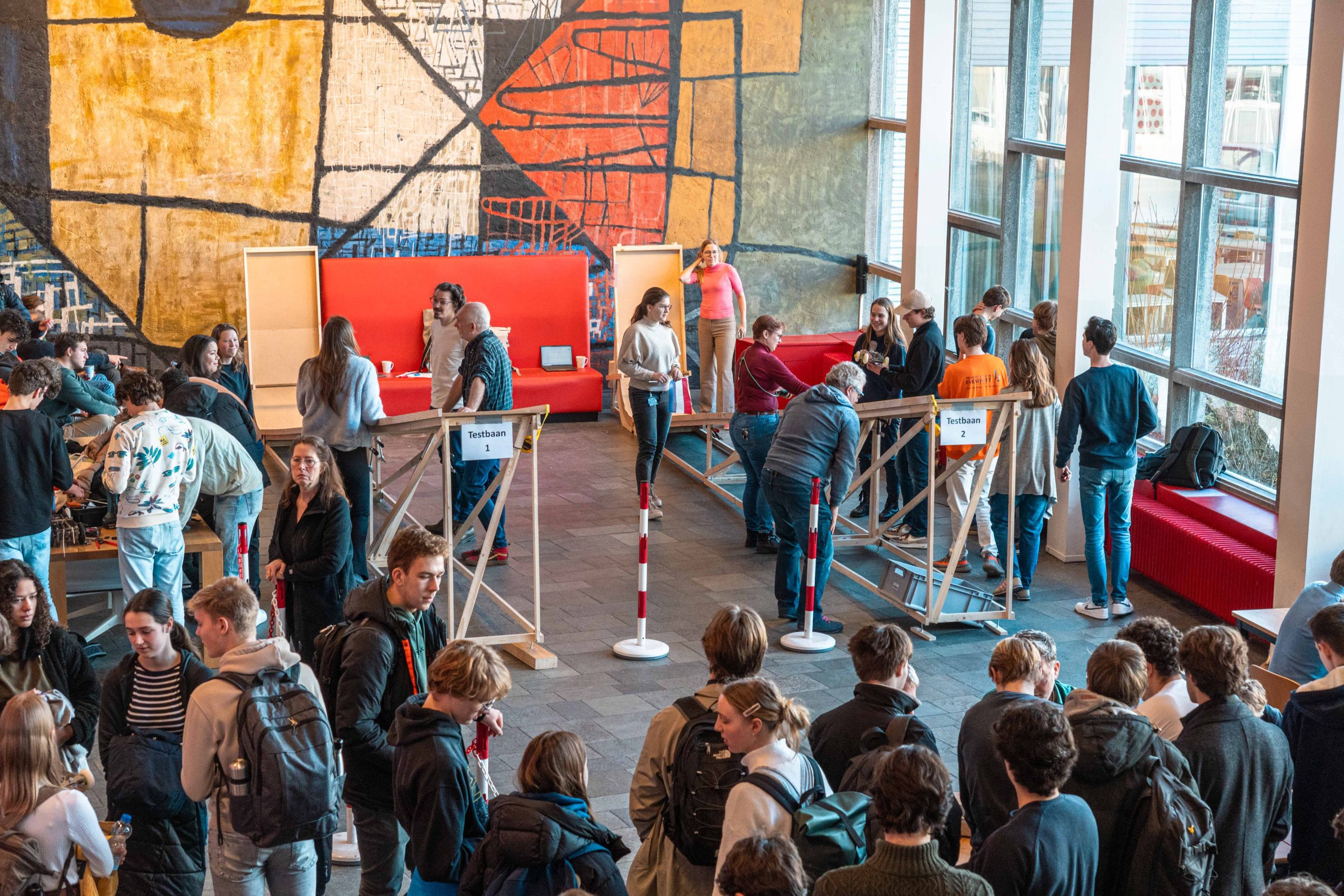More than 700 first-year mechanical engineering students showed how far up the ramp their carts got on Monday and Tuesday. There was a lot of fun and ingenuity on display. And the occasional outlier.
Central hall of the Mechanical Engineering building. Two test tracks are in use for two days to test all 126 carts made by some 700 freshmen. (Photo: Thijs van Reeuwijk)
The moment of truth has arrived for each of the 126 groups. After weeks of designing and building, their creation is now on the ramp. From the starting line, it is exactly five metres to where the track curls up very steeply to almost vertical. There the cart falls back and something has to be done to power it back up the ramp. And how do you get it further back up the slope than the starting point? Is that actually possible? Doesn’t that violate the law of energy conservation?
First-year mechanical engineering students dealt with these kinds of questions over the last quarter, says Dr Regine Vroom (Faculty of Mechanical Engineering) who has led the design competition for years. Her colleague, Menno Broers at the Mechanical Engineering Design Project, has already seen quite a few solutions pass by: tension springs, compression springs and torsion springs. A total of 16 project teachers are involved in the course.
Transferring the energy from the springs to the wheels at the right time can push the cart a long way. One team went even further and built in a flywheel that is revved up with a drill just before the start. (More under the photos)






The starting point is five metres uphill, and most carts roll back after just over four metres. But then suddenly there is team that passes the starting point and only comes to a halt at 5.59 metres. Team WB 036 thus set a provisional record. Later, WB 057 went way past that (7.40 metres!) but it was no longer a valid attempt (only three attempts are allowed).
WB 036 put two tension springs under tension. The force is transmitted to the rear wheels (on the way back) through a string and two cogs. On the way out, nothing happens, but on the way back, the bar unlocks the springs which briefly exert maximum force on the wheels. It is a clever design, Broers thinks, and it is solidly constructed.
The team that deployed the flywheel did not fare as well. Something jammed, the cart did not reach the ramp, and on the last attempt it ran into the left guard rail of the ramp with a fast-spinning flywheel waiting to be released. A teacher watching wondered if the flywheel had steered the cart off course. “Coriolis force maybe,” he muttered.
Over the next two quarters, the Mechanical Engineering freshmen will take on another, still secret, challenge to qualify for the often spectacular final of the design competition that will take place on 12 June 2024.
- Download the assignment here (in Dutch)
Do you have a question or comment about this article?
j.w.wassink@tudelft.nl


Comments are closed.